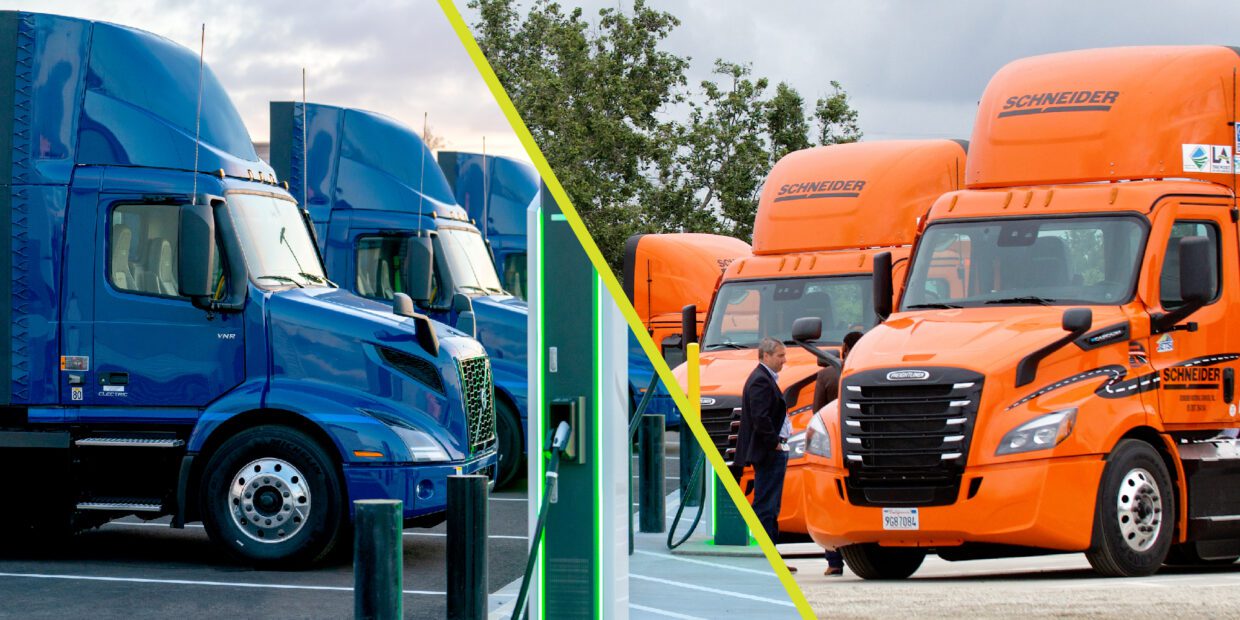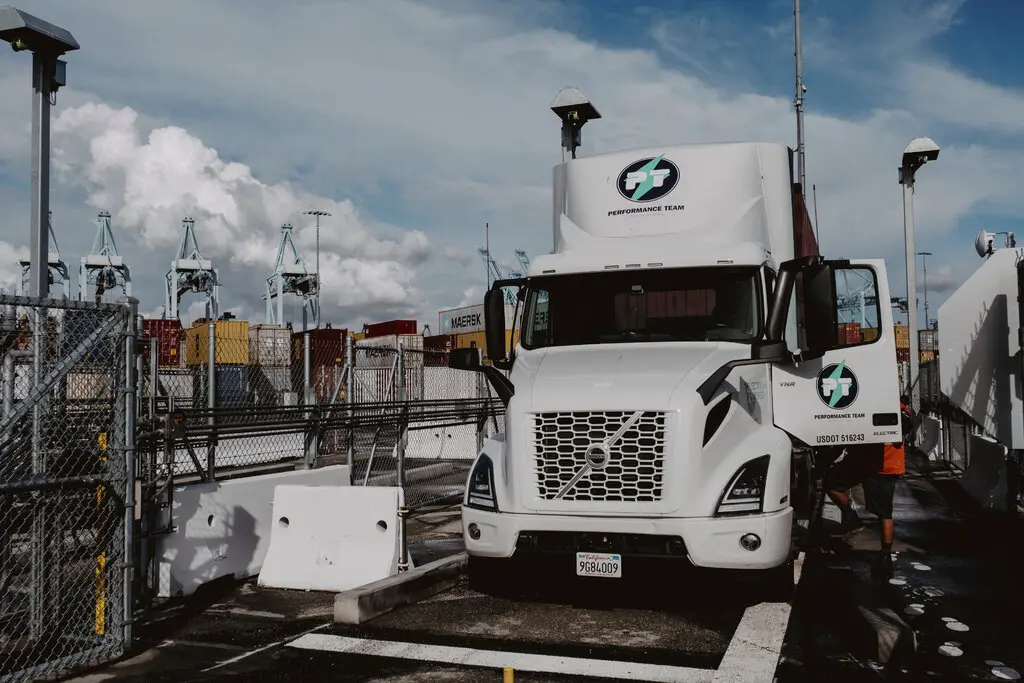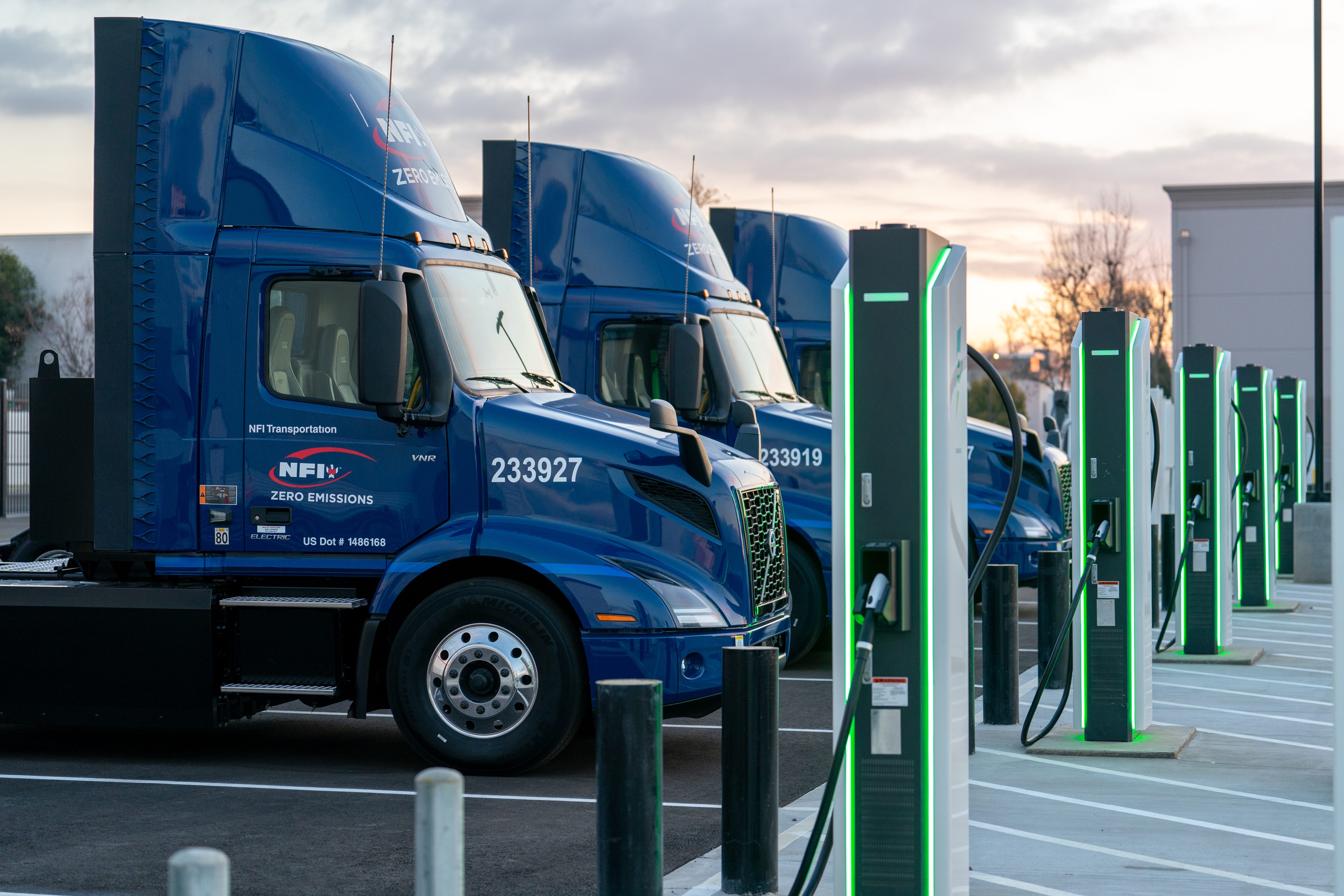
The Joint Electric Truck Scaling Initiative (JETSI) proudly celebrates a major clean transportation milestone: project partners NFI and Schneider have collectively driven over 11 million miles using their battery-electric truck (BET) fleets. This achievement marks a significant milestone in achieving scaled zero-emission operations and offers a proven model for other fleets considering electrification.
NFI’s Industry-Leading Zero-Emission Operations
Building on its early leadership in the Daimler Innovation Fleet and Volvo LIGHTS project, NFI now operates 70 battery-electric trucks and announced in March that it had surpassed five million zero-emission miles driven.
NFI’s battery-electric trucks primarily serve drayage and regional haul routes between the Ports of Los Angeles and Long Beach, nearby rail yards, and warehouses across the Inland Empire—some of the busiest and most emissions-intensive freight corridors in the country.
To support these operations, NFI has installed 19 dual-port 350 kW chargers at its Ontario, California facility. The chargers were funded in part by the California Energy Commission (CEC), installed by Electrify America, and powered by Southern California Edison (SCE). A solar and battery energy storage system is scheduled to come online later this year, which will help enhance energy resilience and reduce peak demand charges
“Our goal is to drive sustainability throughout our entire supply chain, and reaching five million zero-emission miles is a testament to that commitment,” Jessica Cordero, Vice President at NFI Cal Cartage, said recently to the New York Times. “We remain dedicated to reducing our environmental impact and advancing the industry’s shift toward zero emissions.”
Schneider’s Success in Electrification
In December 2024, Schneider surpassed six million zero-emission miles with its battery-electric fleet. In addition to the 50 Freightliner eCascadias deployed through JETSI, Schneider operates 42 additional BETs in Southern California, serving some of the region’s busiest freight corridors. The fleet primarily serves routes between the Ports of Los Angeles and Long Beach, distribution hubs in the Inland Empire, and customer facilities across the Greater Los Angeles area.
To support these operations, Schneider developed a large-scale charging depot at its Southern California Operations Center in South El Monte, equipped with 16 dual-port 350 kW chargers that allow 32 trucks to charge simultaneously. The depot was developed with support from Southern California Edison (SCE), Power Electronics, and Black & Veatch.
“Reaching this milestone underscores our commitment to sustainability and innovation in freight transportation,” said Mark Rourke, President and CEO of Schneider. “Scaling electric trucks into our fleet not only benefits the environment but also enhances the service we provide to our customers.”
Workforce Development and Industry Growth
JETSI’s large-scale deployments demonstrate that battery-electric trucks can be successfully integrated into daily operations at scale. From route planning and charging logistics to workforce development, NFI and Schneider are helping chart the course for other fleets looking to adopt zero-emission technologies.
As part of the JETSI project’s workforce development efforts, 20 students and faculty from Rio Hondo College’s heavy-duty electric vehicle maintenance program and LACI’s Los Angeles Regional Cleantech (LARC) program will attend ACT Expo 2025.
During the event, students will visit JETSI project partners—including Electrify America, Black & Veatch, TRC, Daimler Trucks North America, and Volvo Trucks North America—as well as hear firsthand from NFI and Schneider about the growing career opportunities in clean transportation and fleet electrification.



